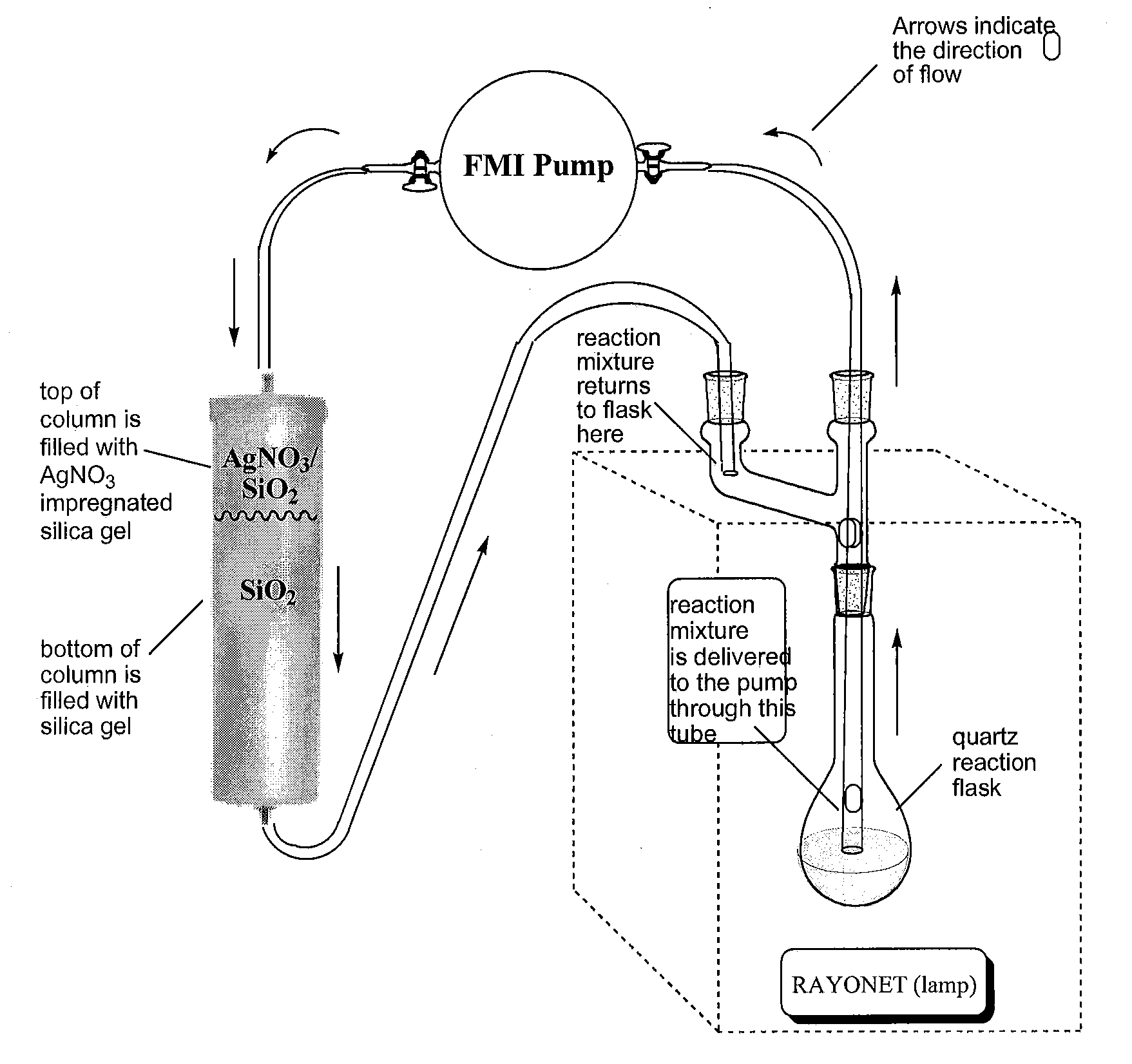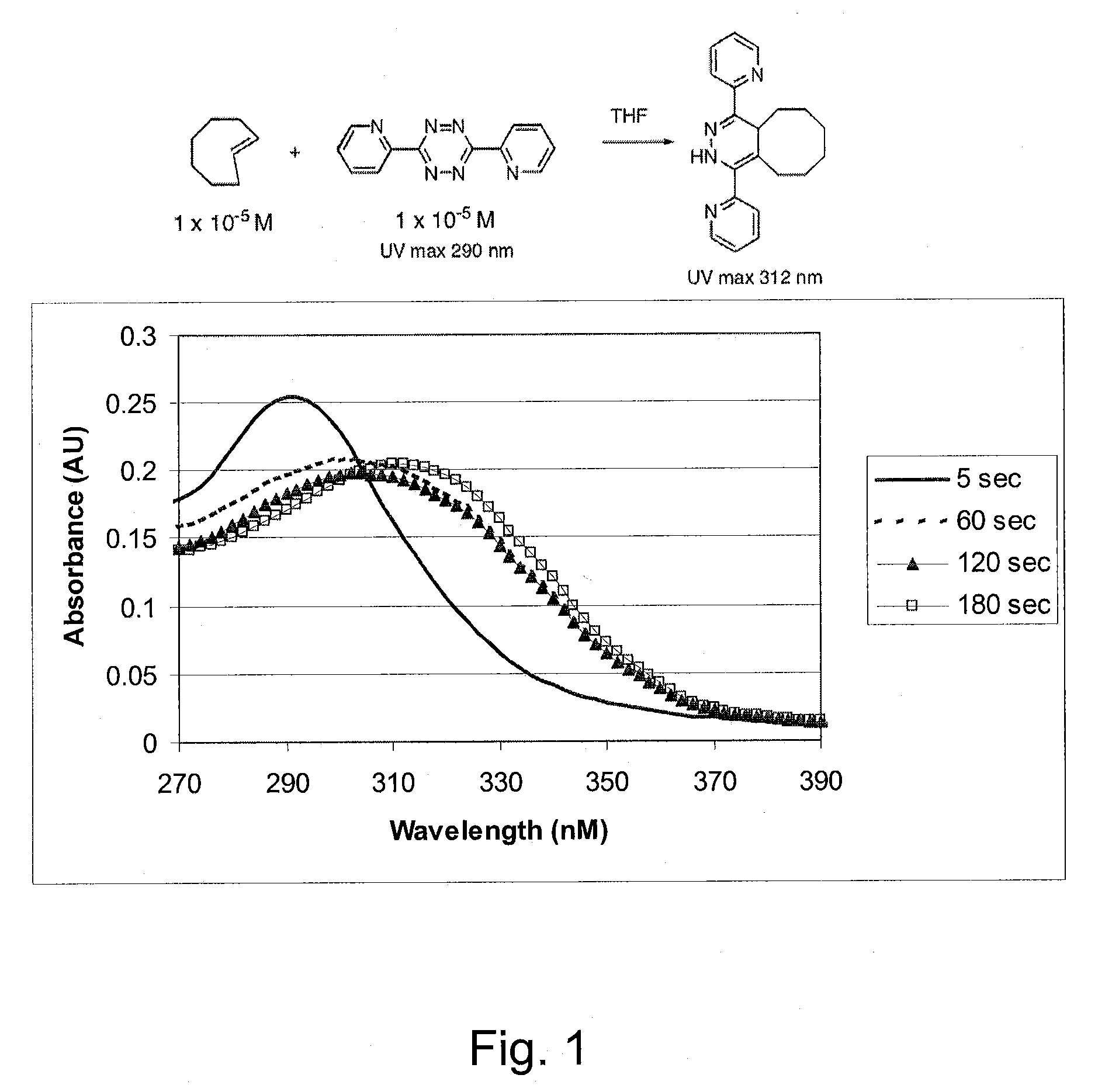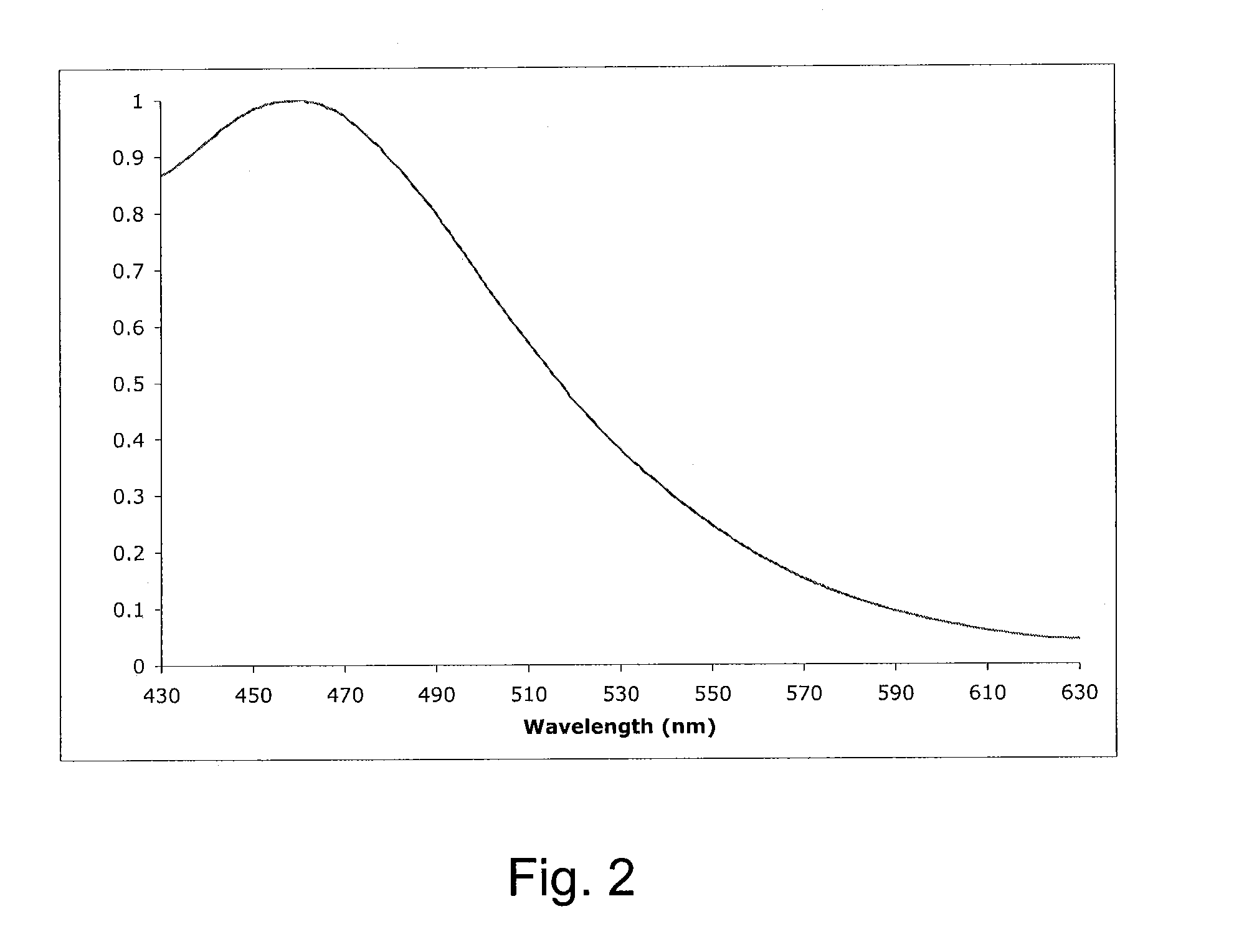Tetrazine-based bio-orthogonal coupling reagents and methods
a bioorthogonal coupling and reagent technology, applied in the field of tetrazine-based bioorthogonal coupling reagents and methods, can solve the problems of high concentration, large excess, and slow reaction rate,
- Summary
- Abstract
- Description
- Claims
- Application Information
AI Technical Summary
Problems solved by technology
Method used
Image
Examples
examples
[0058]Photolyses were carried out using a Southern New England Ultraviolet Company: RAYONET® reactor model RPR-200, equipped with a stirring plate and 6 low pressure mercury lamps irradiating at 2537 Å. Photolyses were carried out in a 500 mL Quartz flask (Southern New England Ultraviolet Company part number RQV-323). The column used in the photolytic step were purchased from ISCO (part #69-3873-146; solid sample cartridge cap #683877061). The bottom of the column was interfaced to TEFLON® PTFE tubing flanged with nylon fittings (¼-28 thread,⅛″ OD×0.063″ ID, Alltech part #20020) using a female Luer (¼-28 thread, Isco part #209016904). The pump used for recirculating solvents through the photolysis apparatus was purchased from FMI (FMI Pump Model RP-D equipped with a pumphead FMI R405).
Representative Photochemical Synthesis of Trans-Cyclooctenes: Preparation of (E)-Cyclooct-4-enol
[0059]Reagent grade ethyl ether (500 mL) was added to (Z)-cyclooct-4-enol (1 g, 7.9 mmol) and methyl benz...
PUM
| Property | Measurement | Unit |
|---|---|---|
| temperature | aaaaa | aaaaa |
| wt % | aaaaa | aaaaa |
| wt % | aaaaa | aaaaa |
Abstract
Description
Claims
Application Information
 Login to View More
Login to View More - R&D
- Intellectual Property
- Life Sciences
- Materials
- Tech Scout
- Unparalleled Data Quality
- Higher Quality Content
- 60% Fewer Hallucinations
Browse by: Latest US Patents, China's latest patents, Technical Efficacy Thesaurus, Application Domain, Technology Topic, Popular Technical Reports.
© 2025 PatSnap. All rights reserved.Legal|Privacy policy|Modern Slavery Act Transparency Statement|Sitemap|About US| Contact US: help@patsnap.com



